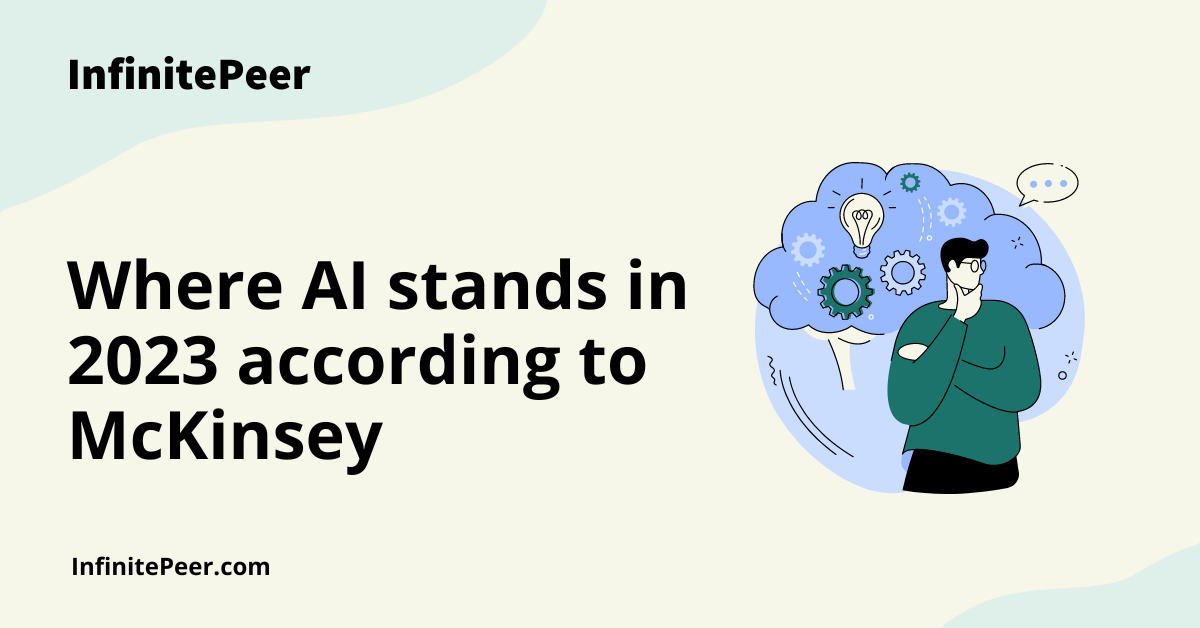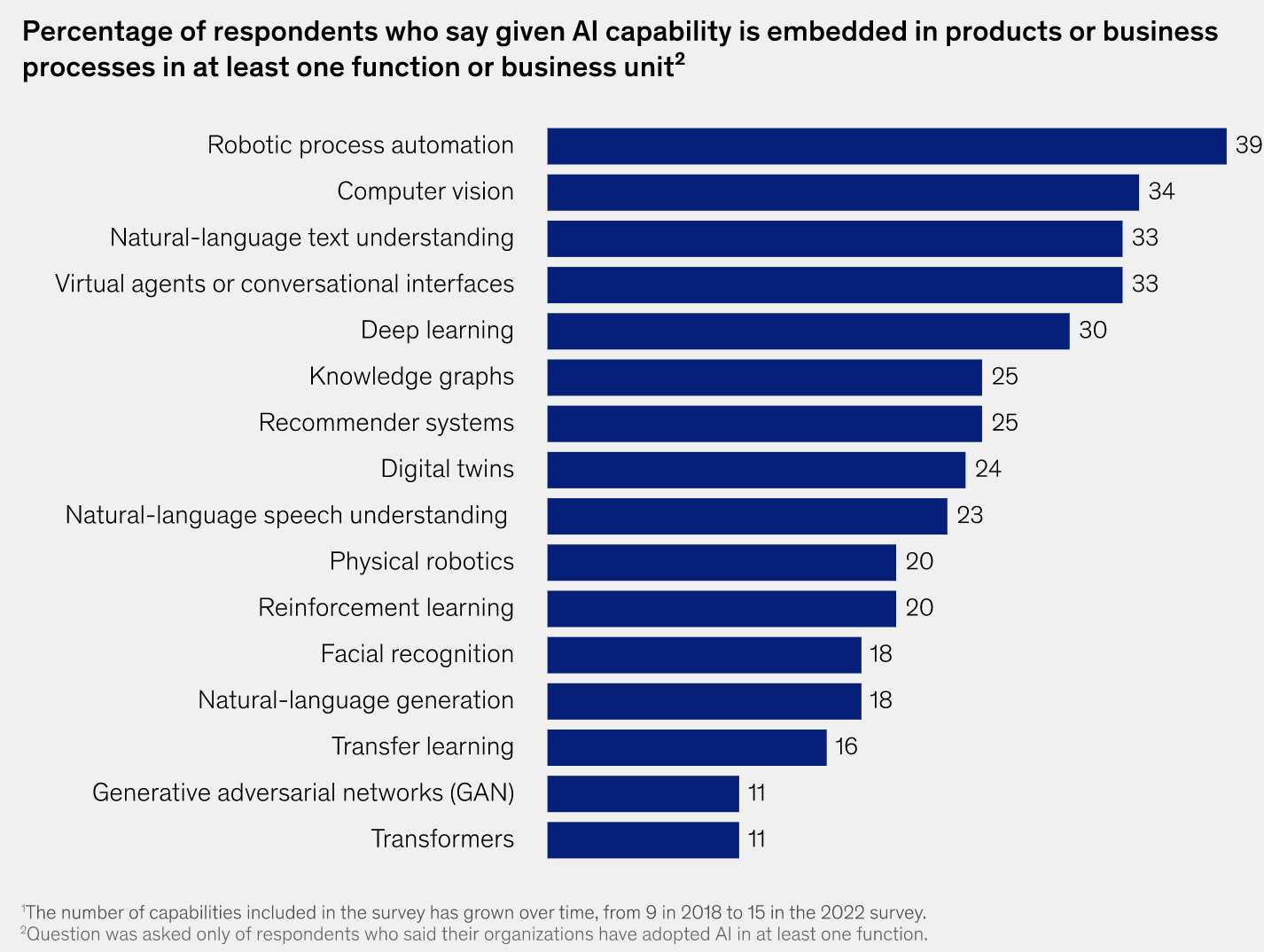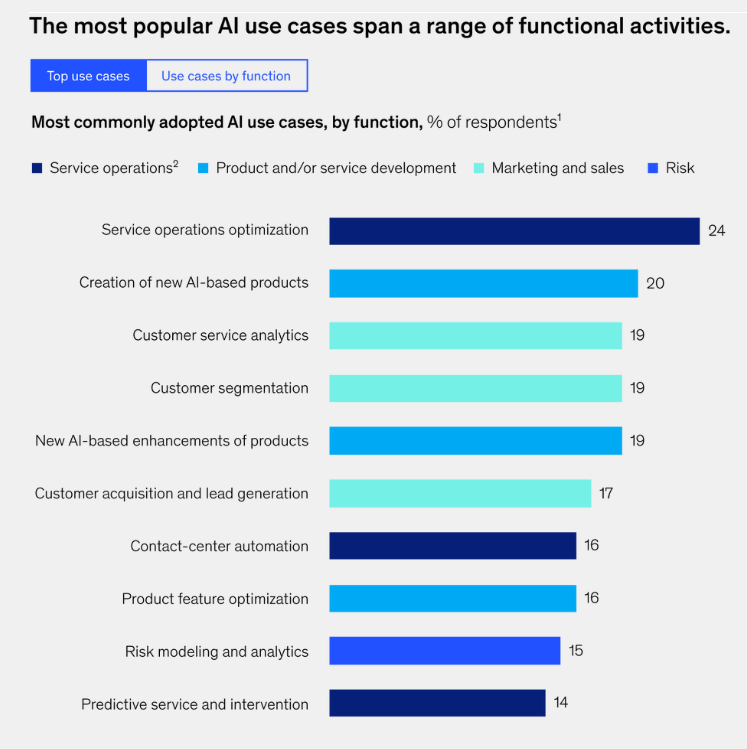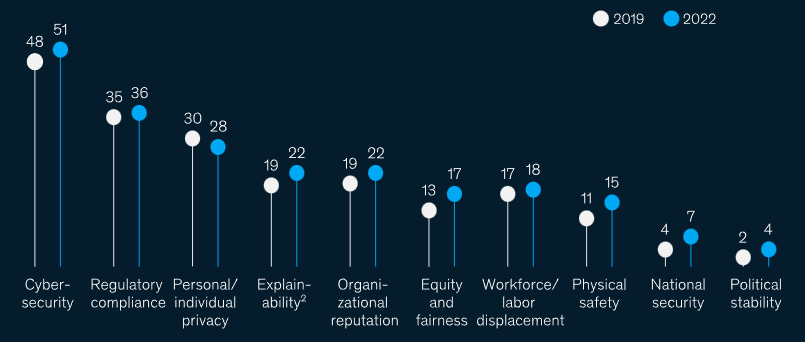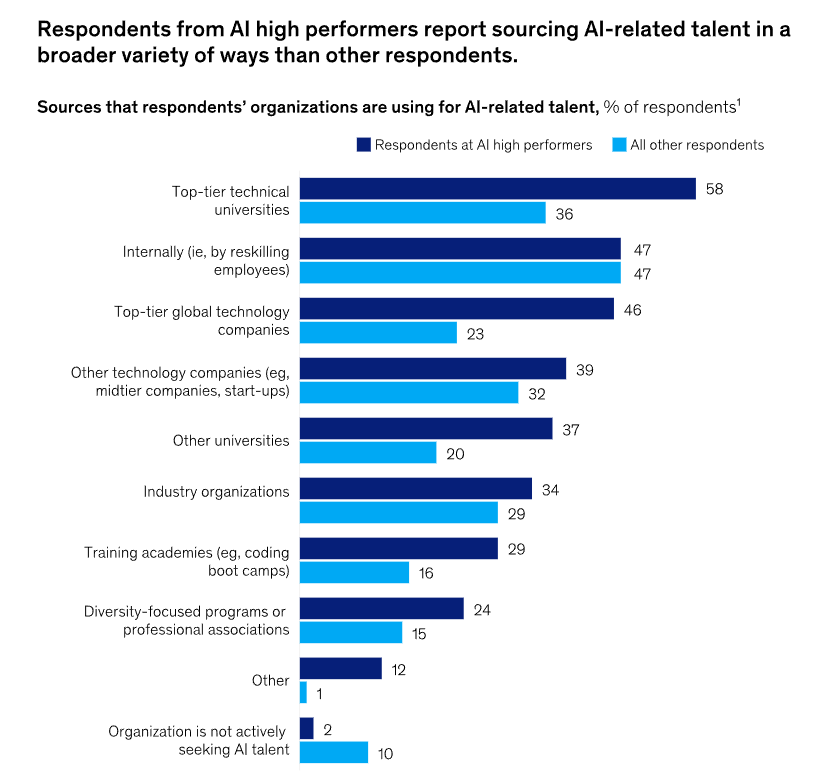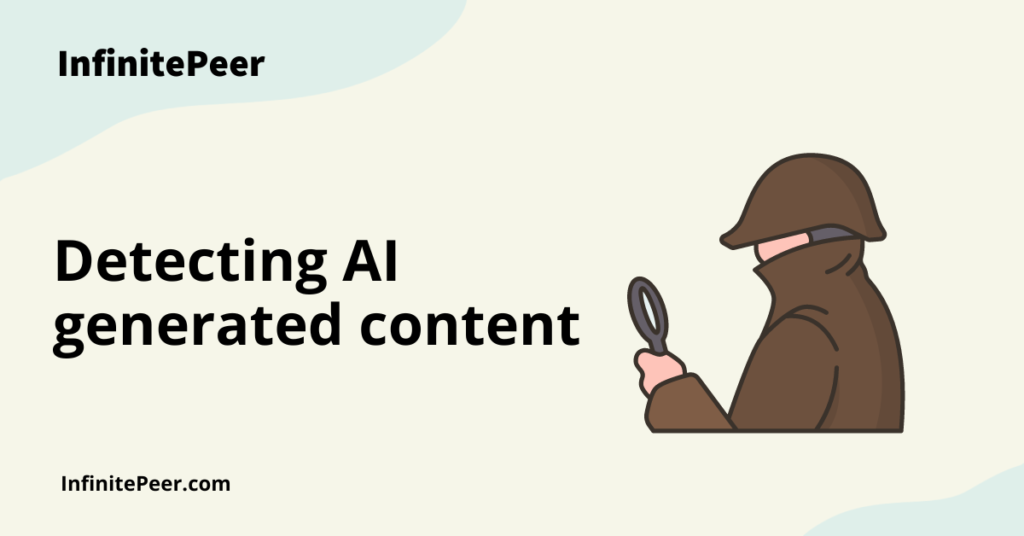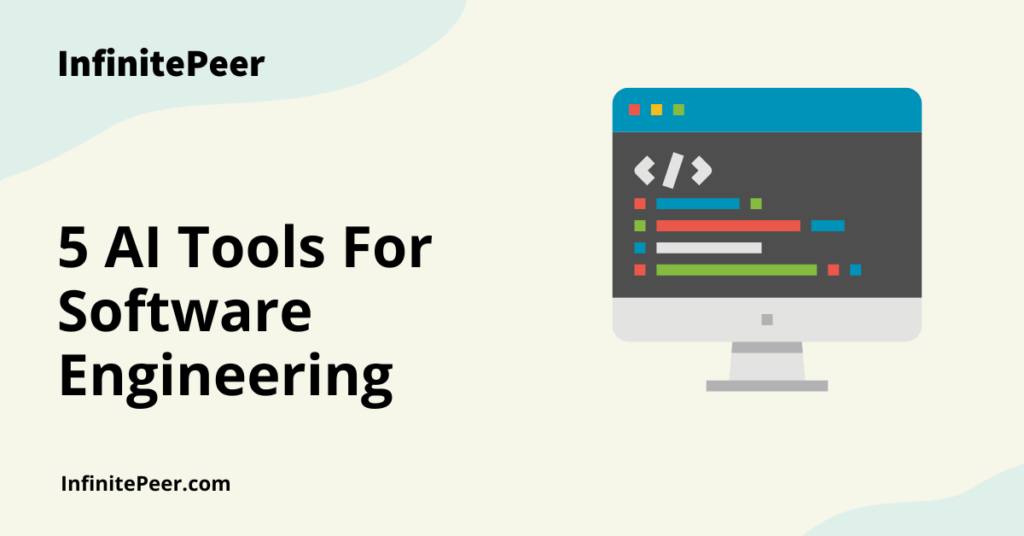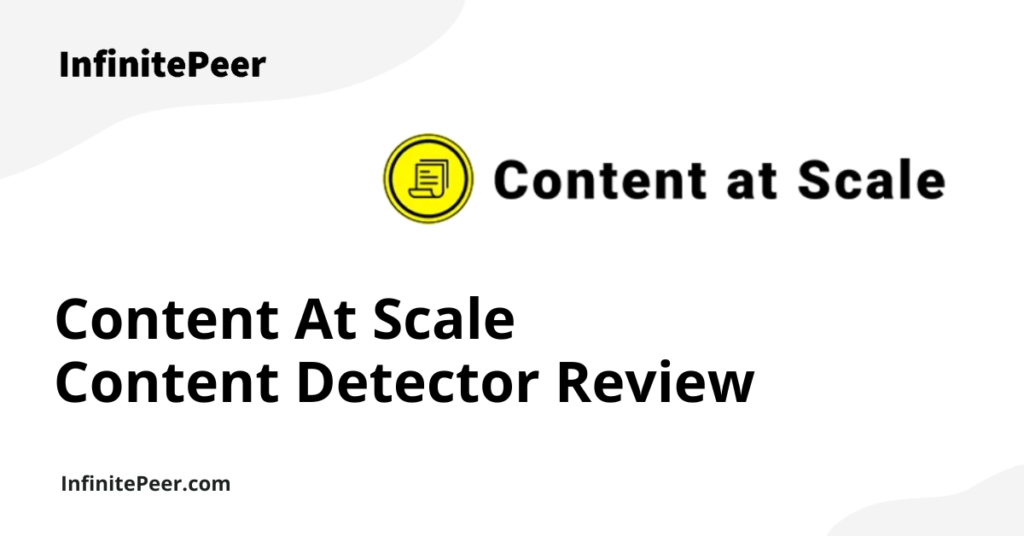McKinsey & Company is a global management consulting firm. They provide strategic, operational, and organizational advice to major corporations, governments, and other organizations. The company has offices all over the world and conducts business in more than 130 countries.
In late 2022, McKinsey drafted an extensive report on where AI stands going into 2023. We’ve put together a list of the most important findings and lessons for businesses that want to learn about the outlook for AI in 2023 and beyond.
Let’s dive in…
AI adoption, impact, and spend
Adoption: Adoption has soared in the past 5 years. In 2017, 20% of organizations reported using AI in at least one business area. In 2022, that number is 50%. AI adoption globally has increased exponentially over the past 5 years.
Distinct AI capabilities used by organizations: From an average of 1.9 AI capabilities incorporated by organizations in 2018 to 3.8 in 2022, distinct AI technology adoption has doubled, with robotic process automation and computer vision being the most commonly deployed technologies each year.
Most popular areas using AI: Optimization of service operations has been the top priority for the past four years. This includes the use case most of us automatically think of when we hear AI: chatbots. A number of the other top use cases focus on automating customer interactions and service.
Investment continues: In 2018, 40% of companies spent at least 5% of their digital budget on AI, this has increased to 52% in 2022. Around 63% of respondents expect their organizations’ investments to increase over the next three years.
Impact on both the top and bottom lines: AI has been used in different ways that have led to lower costs, more efficiency, and opportunities to make more money.
In 2018, the two functions which saw the most value from AI adoption were manufacturing and risk. Today, marketing and sales, product and service development, and strategy and corporate finance are the areas with the greatest reported revenue effects, and respondents report that supply chain management experiences the greatest cost savings from AI.
About 25% of the people who answered said that AI brought in more than 5% of their total revenue.
Risk mitigation: One issue that has consistently persisted for the past 5 years is risk reduction. The number of organizations identifying and working on mitigating a set of AI-related risks has remained constant. The most well-known of these threats is cyber security.
AI leaders pulling ahead
The organizations that have been identified as “AI high performers” have a competitive advantage over others in the field. These high-performers have a steady EBIT of 20% or more because they use AI, and they have mostly seen better results because AI has helped them grow their top line. They follow core practices such as linking their AI strategy to business outcomes and engaging in “frontier” practices that enable AI development and deployment at scale.
AI high-performers also have a head start in managing potential AI-related risks such as personal privacy, equity, and fairness. They are poised to continue outspending others on AI efforts, spending a larger proportion of their digital technology budgets on AI-related technologies. They also have less difficulty hiring for AI-related roles. The report suggests that organizations outside the leader group can learn from the best practices of these high performers to improve their AI efforts.
AI talent tales
Almost all organizations agree that the hiring of AI experts, especially data scientists and machine learning engineers, is still tough. AI high-performers have reported slightly less difficulty while hiring.
- The most common hires in the AI field are software engineers, followed by data engineers and data scientists.
- The tech talent shortage has shown no sign of alleviation, threatening to slow the AI shift for some companies. A majority of organizations reported facing difficulty while hiring for each AI-related role with the most difficult being AI data scientists, as these talents are extremely scarce and difficult to find.
- Although AI high-performers report trouble hiring more frequently than not, they do find it slightly easier than other firms. These organizations have almost twice the number of AI data scientists, machine learning engineers, and AI product owners as compared to other organizations.
Solutions to mitigate the hiring drought:
To fill AI talent deficits on their teams, organizations have begun upskilling and reskilling: McKinsey found that the preferred method for finding AI talent was reskilling and upskilling current staff. Nearly half of all organizations are applying this methodology, as opposed to hiring externally.
AI high-performers are exerting more effort than others to find talent in the field of AI from numerous sources. The research reveals that while they are more likely to hire from prestigious technical universities and tech firms, they are also more likely to find talent at other colleges, training academies, and professional organizations that emphasize diversity.
Diversity on AI teams is still a work in progress
Only 27% of the people on the average AI team are women, but 46% of organizations have started programs to increase this number.
While these teams have an average of 25% members from ethnic minority groups, 27% of organizations have no minority talent on their AI teams. 33% of the organizations have started some programs to solve the issue.
Diversity in AI will likely continue to be an issue for organizations over the coming years.
Conclusion
In short, McKinsey’s report on AI in 2022 focuses on the growing use and impact of AI in different business areas, as well as the growth of organizations’ use of different AI capabilities.
They also note an increase in AI investments, with the majority of companies spending at least 5% of their digital budget on AI and expecting those investments to grow in the coming years.
The report also emphasizes the importance of risk mitigation in AI adoption as well as the ongoing difficulties in hiring AI talent. It talks about how important it is to reduce risks when using AI and how hard it is to hire people with AI skills.
Lastly, McKinsey also identified that a small group of “AI high performers” have a competitive advantage over others in the field and are more likely to effectively manage potential AI-related risks and attract top AI talent. Organizations outside the leader group are encouraged to learn from the best practices of these high performers in order to improve their own AI efforts.
